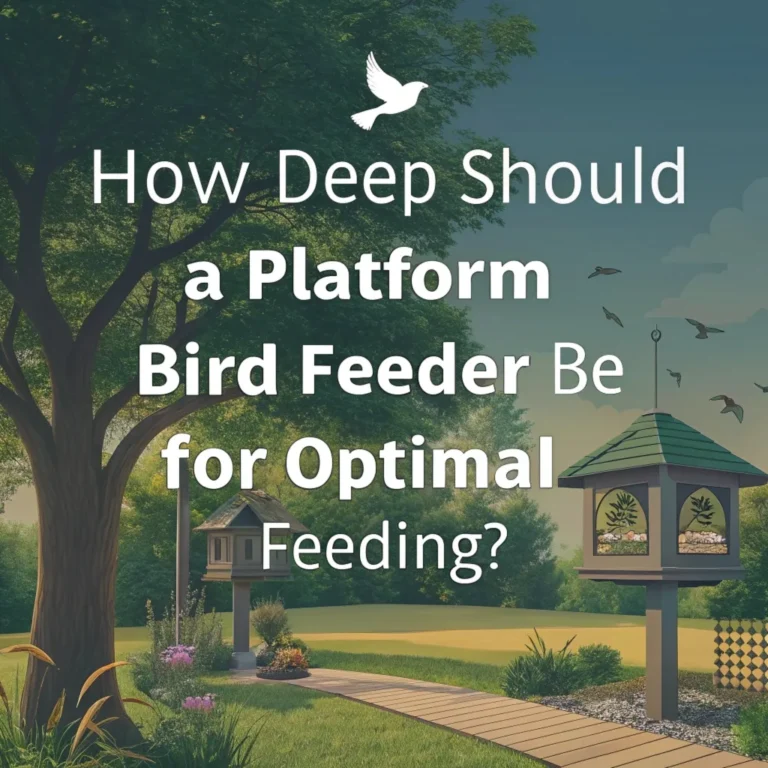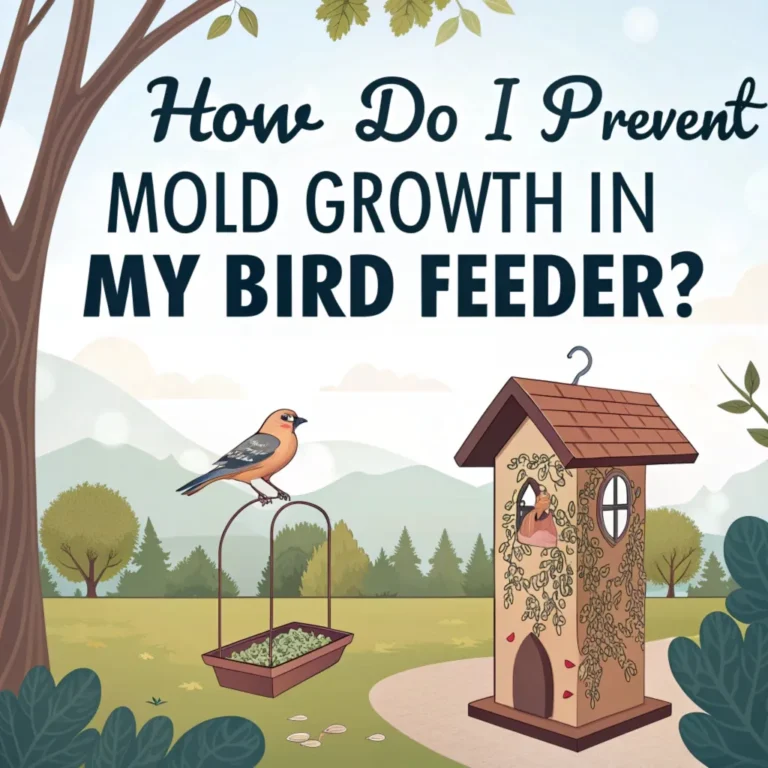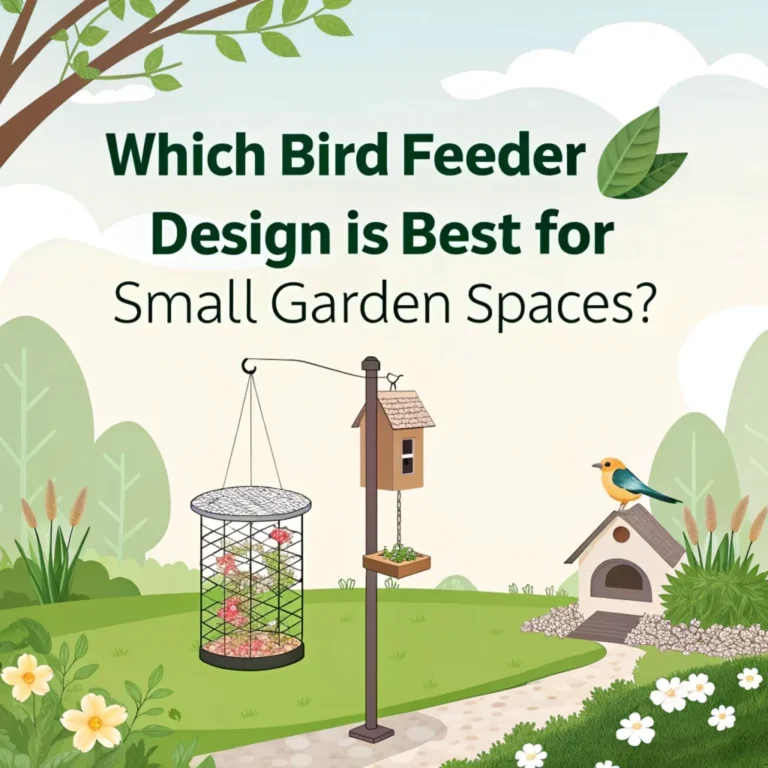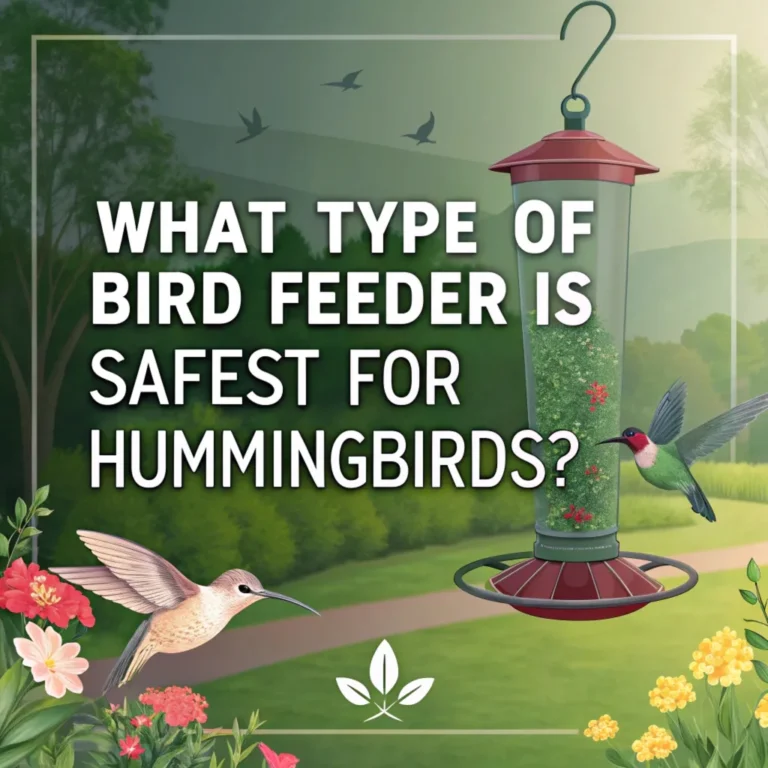What Size Bird Feeder Holes Work Best for Small Birds?
Small birds bring life to gardens. The right feeder hole size attracts these tiny visitors. This guide helps you choose the best feeder holes for small birds.
This article provides practical tips for bird enthusiasts. It covers everything from feeder types to maintenance.
Start attracting more small birds to your garden today with the right feeder hole sizes.

Key Takeaways
- Hole size matters: Smaller holes (1-1.5 inches) attract and protect small birds
- Species-specific dimensions: Different small birds need varying hole sizes
- Feeder types: Tube feeders, caged feeders, and window feeders work well for small birds
- Food considerations: Seed type influences optimal hole size
- Safety features: Proper hole sizes deter larger birds and predators
- Placement: Feeder location affects small bird attraction
- Maintenance: Regular cleaning of feeders is crucial for bird health
- Seasonal adjustments: Adapt hole sizes based on seasonal bird populations
- Multiple options: Offer various feeder types to attract diverse small bird species
- Observation: Monitor feeder activity to optimize hole sizes for your local birds
Understanding Small Bird Feeder Hole Sizes
Small birds need specific hole sizes for safe and comfortable feeding. The ideal hole diameter ranges from 1 to 1.5 inches for most small bird species. This size allows easy access for tiny birds while deterring larger birds and predators.
Proper hole sizes play a crucial role in attracting and protecting small birds. When feeders have appropriately sized openings, they create a safe haven for smaller species, allowing them to feed without competition from larger birds.
This careful consideration of hole dimensions ensures that your garden becomes a welcoming sanctuary for a variety of tiny feathered visitors.
The importance of correct hole sizes extends beyond just accessibility. It also affects the feeding behavior and social dynamics among birds visiting your garden.
Smaller holes encourage more frequent visits from small birds, leading to a lively and diverse bird population in your outdoor space.
Optimal Hole Sizes for Common Small Birds
Different small bird species prefer varying hole sizes:
- Chickadees: 1.125 inches
- Nuthatches: 1.25 inches
- Titmice: 1.25 inches
- Finches: 2 inches
- Wrens: 1 inch
- Warblers: 1.25 inches
Understanding the specific needs of each bird species helps in creating a more inclusive feeding environment.
By offering feeders with various hole sizes, you can cater to a wider range of small birds, increasing the diversity of visitors to your garden.
This approach not only enhances your bird-watching experience but also supports local bird populations.
Adapting your feeders to suit different species can lead to fascinating observations of bird behavior and interactions. It’s a rewarding way to contribute to local biodiversity while enjoying the beauty of nature up close.
Tube Feeders for Small Birds

Tube feeders are popular for small birds. These feeders typically have multiple feeding ports with diameters of 0.5 to 1 inch. This size range suits many small bird species, including finches, chickadees, and titmice.
Tube feeders offer several advantages for small bird feeding. Their vertical design allows for multiple feeding stations, accommodating several birds at once.
This feature is particularly beneficial during peak feeding times when many birds are active. The narrow structure of tube feeders also helps in conserving seed and keeping it dry.
The versatility of tube feeders makes them a favorite among bird enthusiasts. They can be easily filled, cleaned, and maintained, ensuring a healthy feeding environment for small birds throughout the year.
Caged Feeders for Added Protection
Caged feeders offer extra protection for small birds. The cage openings should be about 1.5 inches wide, allowing small birds to enter while keeping larger birds and squirrels out.
Caged feeders provide a safe feeding space for smaller birds, protecting them from larger, more aggressive species. This design allows timid birds to feed comfortably without competition.
The cage structure also serves as a deterrent for squirrels and other potential seed thieves, ensuring that the food remains available for its intended recipients.
These feeders are particularly beneficial in areas with high bird diversity or where predator birds are common. They create a secure environment for small birds to feed peacefully.
Window Feeders for Close-Up Views
Window feeders bring birds close for easy observation. For small birds, choose feeders with openings no larger than 1.5 inches in diameter. This size accommodates most small species while preventing access for larger birds.
Window feeders offer a unique opportunity to observe birds up close. They provide an intimate view of feeding behaviors, plumage details, and bird interactions.
This proximity can be especially rewarding for bird photography enthusiasts or those who enjoy detailed bird watching from the comfort of their homes.
The strategic placement of window feeders can also help in bird identification, allowing observers to notice subtle differences between similar species. It’s an excellent way to introduce children to bird watching and nature appreciation.
Specialized Feeders for Tiny Seeds

Feeders designed for tiny seeds like Nyjer require very small holes. These feeders typically have ports about 0.2 inches in diameter, perfect for small finches and siskins.
Specialized feeders for tiny seeds play a crucial role in attracting specific small bird species. The fine seeds used in these feeders, such as Nyjer or thistle, are highly attractive to finches, redpolls, and other small seed-eaters.
The small port size not only prevents seed spillage but also ensures that only the intended small birds can access the food.
These feeders often have a unique design that allows birds to cling to the sides while feeding, mimicking their natural feeding behavior. This setup can create fascinating feeding displays in your garden, especially when multiple birds gather at once.
Suet Feeders for Small Woodpeckers
Small woodpeckers enjoy suet feeders. For these birds, use feeders with openings around 1.25 inches wide. This size allows access for downy woodpeckers while keeping larger species away.
Suet feeders are particularly important for providing high-energy food to small woodpeckers, especially during colder months.
The specific hole size caters to species like downy woodpeckers, allowing them to feed comfortably while discouraging larger woodpeckers or other birds from dominating the feeder.
These feeders often feature a tail prop or clinging surface, which supports the woodpeckers’ natural feeding posture. This design consideration enhances the feeding experience for these specialized birds.
Considerations for Seed Type
The type of seed you offer influences the ideal hole size:
- Sunflower seeds: 0.5 to 1 inch holes
- Nyjer seeds: 0.2 inch holes
- Mixed seeds: 0.5 to 1.5 inch holes
Matching seed types to appropriate hole sizes is crucial for effective feeding. Different seeds have varying sizes and shapes, which affect how easily they can be accessed and consumed by small birds.
The right combination of seed type and hole size ensures that birds can efficiently feed without wasting food or struggling to reach it.
Experimenting with different seed types can help you attract a wider variety of small birds to your garden. Some species have strong preferences for specific seeds, so offering a range of options can increase the diversity of your feathered visitors.
Safety Features in Small Bird Feeders
Proper hole sizes act as a safety feature. They prevent small birds from getting stuck and keep out larger, more aggressive birds. Some feeders include weight-activated perches that close when heavier birds or squirrels attempt to feed.
Safety features in bird feeders are essential for protecting small birds during feeding. The correct hole size not only facilitates easy access for small birds but also serves as a barrier against potential threats.
This design consideration helps create a stress-free feeding environment, encouraging regular visits from small bird species.
Advanced feeder designs with weight-activated mechanisms offer an additional layer of protection. These features ensure that the feeding ports remain accessible only to lightweight, small birds, further enhancing the safety and comfort of your tiny feathered guests.
Feeder Placement for Small Birds
Proper placement enhances small bird attraction:
- Hang feeders 5 to 10 feet off the ground
- Position feeders near natural cover like shrubs or trees
- Keep feeders away from areas where cats or other predators can hide
Strategic placement of feeders is key to attracting small birds while ensuring their safety. The right height and location not only make feeders more visible to birds but also provide quick escape routes to nearby cover.
This careful positioning helps create a comfortable feeding environment where small birds feel secure enough to visit regularly.
Considering the surrounding landscape when placing feeders can significantly impact their effectiveness.
Proximity to natural elements like trees or shrubs offers birds familiar resting spots and shelter, making your feeder setup more appealing to a variety of small bird species.
Maintaining Small Bird Feeders
Regular maintenance is crucial:
- Clean feeders weekly to prevent disease spread
- Check hole sizes regularly for damage or enlargement
- Replace feeders if holes become too large for small birds
Proper maintenance of bird feeders is essential for the health and well-being of small birds. Regular cleaning helps prevent the spread of diseases that can be harmful to bird populations.
It’s important to inspect feeders frequently for any signs of wear or damage that could affect their functionality or safety for small birds.
Monitoring hole sizes over time is crucial, as they can enlarge due to wear or damage from weather or larger birds. Maintaining the correct hole size ensures that feeders continue to serve their intended purpose of attracting and protecting small bird species.
Seasonal Adjustments for Bird Populations
Adjust feeder hole sizes seasonally:
- Use smaller holes in winter to conserve heat for tiny birds
- Offer larger holes in spring and summer when more bird species are active
Seasonal adjustments to feeder hole sizes can significantly impact the effectiveness of your bird feeding efforts.
In winter, smaller holes help tiny birds conserve energy by reducing exposure to cold air while feeding. This adaptation can be crucial for their survival during harsh weather conditions.
During warmer months, larger hole sizes accommodate the increased activity and diversity of bird species.
This adjustment allows for a wider range of visitors to your feeders, enhancing your bird-watching experience and supporting a more diverse bird population in your garden.
Providing Multiple Feeder Options
Offer various feeder types with different hole sizes to attract a diverse range of small birds. This approach ensures that different species can find suitable feeding options in your garden.
Diversifying your feeder options is an effective strategy for attracting a wide variety of small birds. By providing feeders with different hole sizes and designs, you create a more inclusive environment that caters to the preferences and needs of various species.
This diversity not only enhances your bird-watching experience but also supports a healthier local ecosystem.
Multiple feeder types also help reduce competition among birds, allowing more timid species to feed comfortably alongside more assertive ones. This setup can lead to interesting observations of bird behavior and interactions in your garden.
Observing and Adapting to Local Birds
Monitor bird activity at your feeders. If you notice certain species struggling to access food, consider adjusting hole sizes or adding new feeder types to better accommodate them.
Regular observation of bird activity at your feeders is key to optimizing your setup for local bird populations.
By paying attention to which birds visit and how they interact with different feeders, you can make informed decisions about adjustments or additions to your feeding stations.
This adaptive approach ensures that your garden remains an attractive and suitable habitat for a variety of small bird species.
Flexibility in your feeding strategy allows you to respond to changes in local bird populations or seasonal variations. It’s a rewarding way to engage with nature and contribute to the well-being of your local wildlife.
FAQs
What is the ideal hole size for a chickadee feeder?
The ideal hole size for a chickadee feeder is 1.125 inches in diameter.
Can squirrels access feeders with small holes?
Squirrels can often access feeders with holes up to 1.5 inches wide. Use smaller holes or caged feeders to deter them.
How often should I clean my small bird feeders?
Clean small bird feeders at least once a week to maintain hygiene and prevent disease spread among birds.
What type of feeder is best for attracting finches?
Tube feeders with small holes (about 0.5 inches) or specialized Nyjer seed feeders work best for attracting finches.
Are window feeders safe for small birds?
Yes, window feeders are safe for small birds when properly installed and maintained. Ensure the feeder has appropriate hole sizes and is securely attached to the window.

Luna is the passionate founder and author of Birds and You, a website dedicated to sharing her love for birds with fellow enthusiasts. Through her engaging articles and guides, she aims to educate and inspire others to explore the fascinating world of birds. When she’s not writing, you can find Luna observing birds in their natural habitats or sharing beautiful bird photography on Pinterest. Join her on this journey to celebrate and protect our feathered friends!







